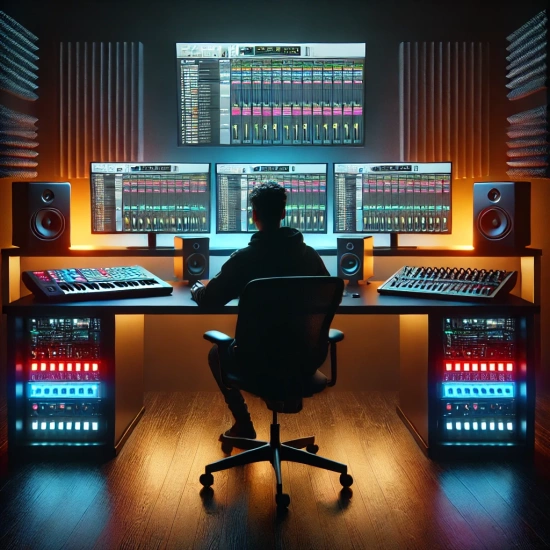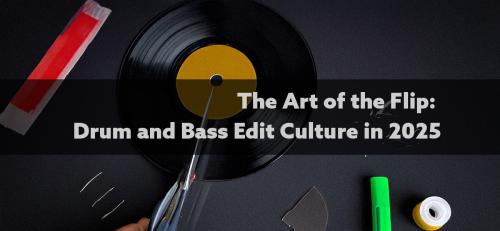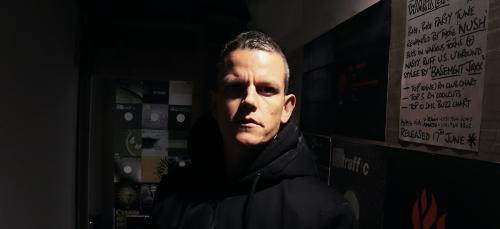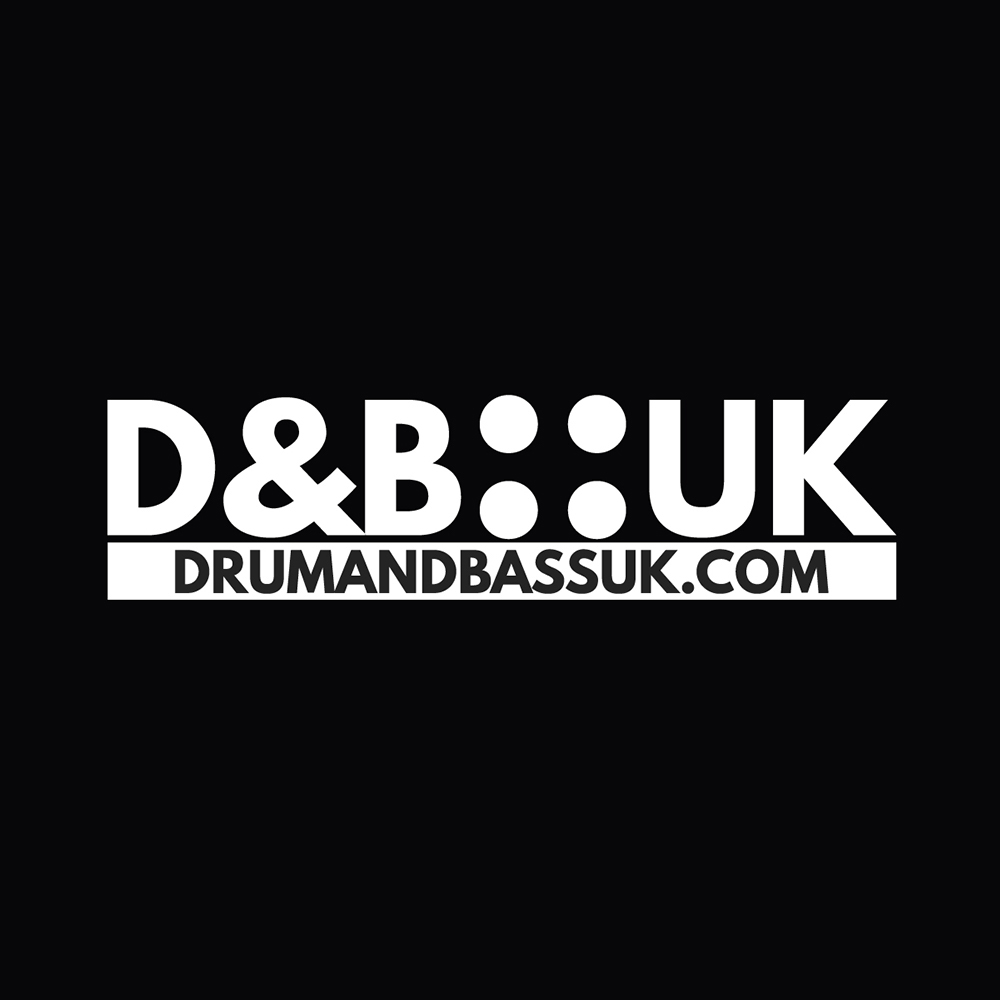
Drum & Bass Production 101: The Ultimate Guide for Beginners
Drum & Bass is a genre that thrives on precision, energy, and technical mastery. Whether you’re drawn to the deep atmospheres of Liquid DnB, the razor-sharp aggression of Neurofunk, or the raw, bouncing energy of Jump-Up, producing high-quality Drum & Bass tracks requires a solid understanding of drum programming, bass design, sound processing, and mixing techniques.
This guide will take you step by step through everything you need to start producing Drum & Bass like a pro. From selecting the right DAW and drum samples to crafting powerful basslines and arranging your track for maximum impact, this is your ultimate resource for DnB production.
Choosing the Right DAW for Drum & Bass
The Digital Audio Workstation (DAW) is the foundation of your music production setup. While any modern DAW can be used for Drum & Bass, some offer workflow advantages, particularly for fast-paced sample manipulation, automation, and MIDI sequencing.
Best DAWs for Drum & Bass Production
- Ableton Live – Excellent for fast workflow, automation, and sample warping.
- FL Studio – Popular for MIDI sequencing and built-in synths like Sytrus and Harmor.
- Logic Pro X – Great for Mac users, with strong stock plugins and flexible mixing tools.
- Bitwig Studio – Offers modular sound design capabilities, useful for advanced sound processing.
If you’re just starting out, Ableton Live or FL Studio are great choices due to their intuitive workflow and vast tutorial resources available online.
For more insights, check out YouTube channels dedicated to music production
- Computer Music Masterclasses – In-depth tutorials from industry professionals
- Metrik – Expert insights from one of DnB’s most respected producers
- Warrior Sound - Unders – Practical tips and production techniques
- STRANJAH - Great tips and advice.
- Prpsptv - Not updated for a while but some great tips and tricks.
Programming Drums: The Backbone of DnB
Drum & Bass is built around complex, high-energy breakbeats, typically programmed at 170–175 BPM. The goal is to create punchy, rolling drums that drive the track forward.
How to Program DnB Drums
- Start with a kick & snare pattern – The standard DnB pattern places kicks on beats 1 & 3, and snares on beats 2 & 4.
- Layer your drums – Combine clean, punchy electronic hits with classic breakbeats for texture.
- Use ghost notes – Add subtle snare hits between main hits to create movement.
- EQ & process the drums – Apply transient shaping, compression, and saturation for punch and clarity.
Essential DnB Breakbeats to Sample
- The Amen Break – The most iconic break in DnB history.
- The Think Break – A tight break with a lot of groove.
- The Apache Break – A staple in Jungle and early DnB.
For more tips, watch:
Designing the Perfect DnB Bassline
The bassline is what gives Drum & Bass its signature energy. Whether you’re crafting a deep rolling sub, a growling reese bass, or a bouncy Jump-Up wobble, understanding how to design and process bass is crucial.
Types of Drum & Bass Basslines
- Sub-Bass – Deep and minimal, used in Liquid DnB.
- Reese Bass – Detuned, growling bassline for Neurofunk and Techstep.
- Wobble Bass – Heavily modulated, great for Jump-Up.
- 808 Bass – Simple but effective, often used in Halftime DnB.
How to Create a Reese Bass
- Load a saw wave synth (Serum, Vital, Phase Plant).
- Detune two oscillators slightly to create movement.
- Apply filtering, distortion, and modulation to shape the sound.
- Use LFO automation to add dynamic movement.
For advanced bass sound design, check out:
Best Plugins & Synths for DnB Production
To create professional-quality DnB tracks, using the right plugins can make all the difference.
Best Synths for Bass Design
- Xfer Serum – The industry standard for reese bass and growls.
- Vital – A free, powerful alternative to Serum.
- Phase Plant – Great for complex sound design.
Best Plugins for Drums & Processing
- Battery 4 – Great for managing drum samples.
- FabFilter Saturn – Adds warmth and saturation.
- Ozone Imager – Useful for stereo widening.
For plugin recommendations, watch:
Mixing & Mastering Tips for Drum & Bass
Mixing Drum & Bass is about clarity, punch, and balance.
Key Mixing Tips
- EQ everything – Remove unnecessary low frequencies from non-bass elements.
- Sidechain smartly – Sidechain the bass to the kick to prevent muddy low-end clashes.
- Stereo placement – Keep your kick, snare, and sub in mono, and pads, atmospheres, and effects in stereo.
For mastering tips, watch:
Studying Drum & Bass Production: Taking Your Skills to the Next Level
While self-learning through tutorials and experimentation is a great way to get started, structured courses and formal training can accelerate your progress as a producer. Whether you want to dive deeper into sound design, mixing techniques, or music theory, enrolling in a dedicated music production course can give you access to expert guidance, industry connections, and professional-grade resources.
Top Courses & Qualifications for Drum & Bass Production
ACM (Academy of Contemporary Music) – Electronic Music Production Degree
- Location: London, Birmingham, Guildford
- Qualification: BA (Hons) in Electronic Music Production
- Course Highlights:
-
Advanced sound design and synthesis techniques
-
Industry masterclasses from professional producers
-
Access to high-end studio equipment and production tools
-
Opportunities for collaborating with artists and DJs
This is one of the UK’s most recognised qualifications for electronic music producers, offering full-time degrees and diploma options.
Point Blank Music School – Online & In-Person Production Courses
- Locations: London, Los Angeles, Online
- Qualification: Certificates & Diplomas in Music Production
- Course Highlights:
-
Specialised bass music production modules
-
Access to industry-standard software & hardware
-
Weekly 1-on-1 mentoring with professional tutors
-
Includes modules on marketing and music business
Perfect for producers looking for structured training, with options to study online or in a studio environment.
For shorter, self-paced learning, platforms like Udemy offer a range of affordable music production courses, covering everything from sound design to mixing and mastering.
Final Thoughts: Start Producing Now!
Drum & Bass is a genre that rewards experimentation, technical skill, and sound design creativity.
Key Takeaways
- Master drum programming – Layer breakbeats and use ghost notes.
- Experiment with bass synthesis – Create powerful low-end movement.
- Use high-quality synths and plugins – Serum, Battery 4, FabFilter.
- Improve your mixdowns – EQ, sidechain, and balance stereo width.
Are you producing DnB? Drop a link to your tracks in the comments!


























Comments
0